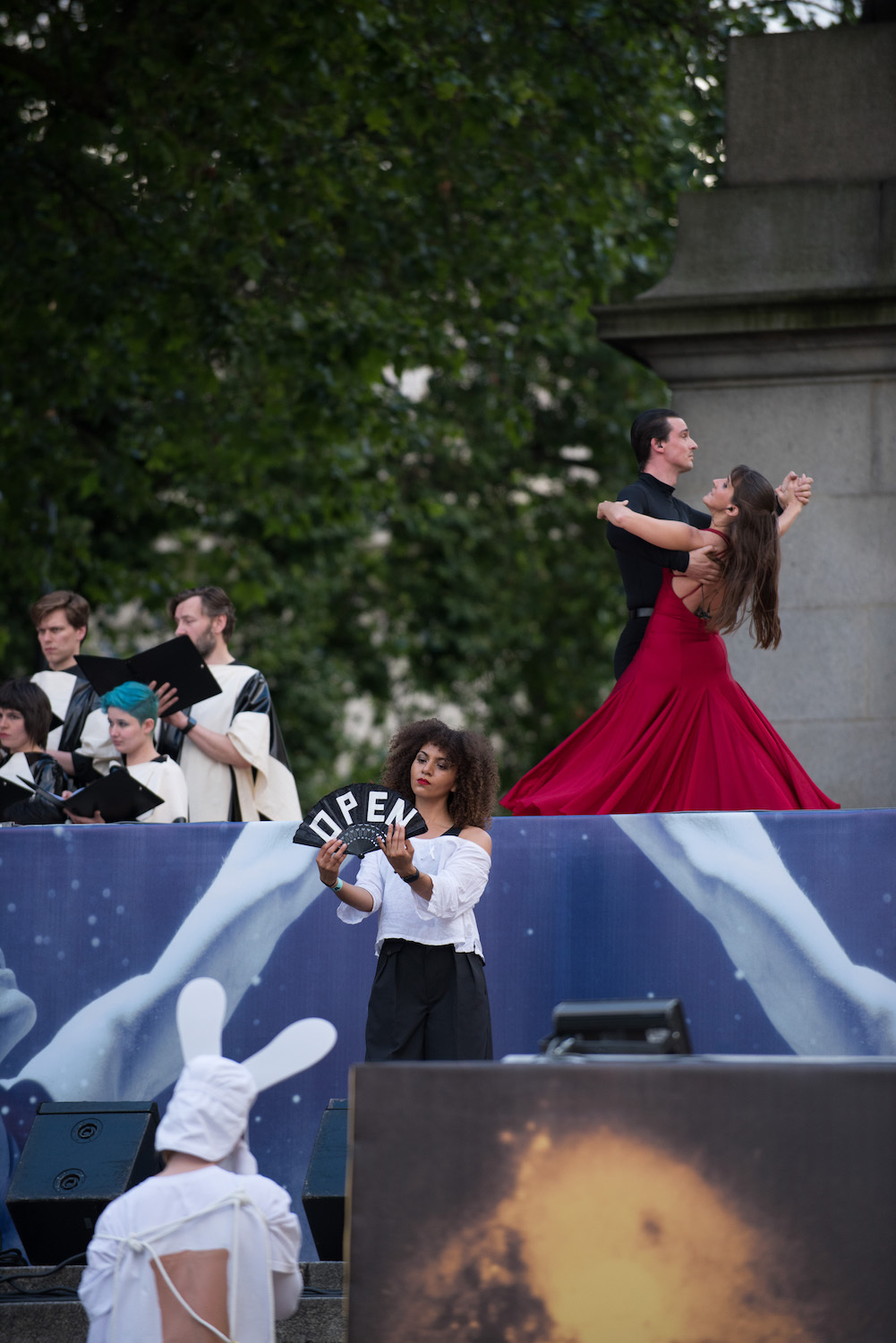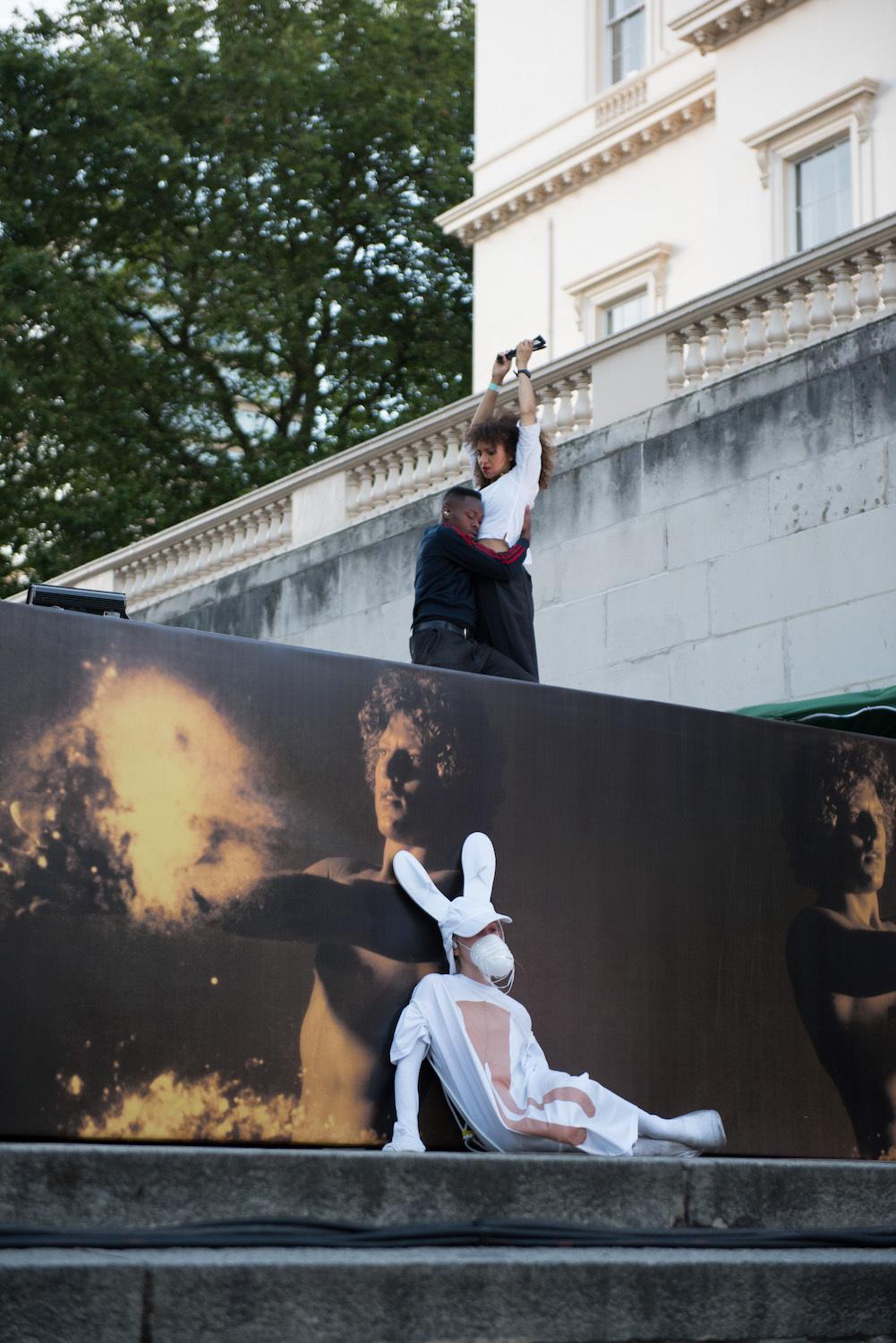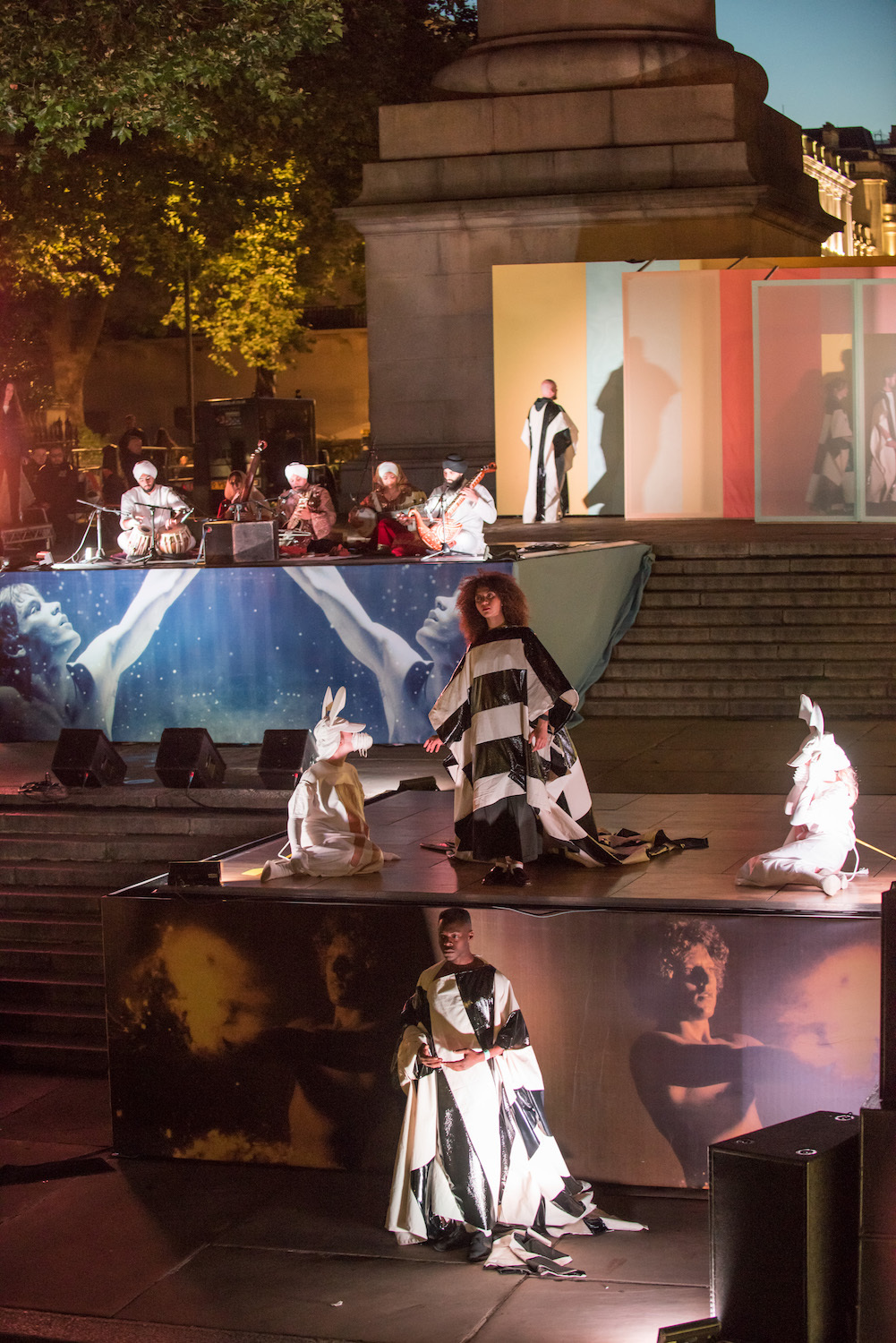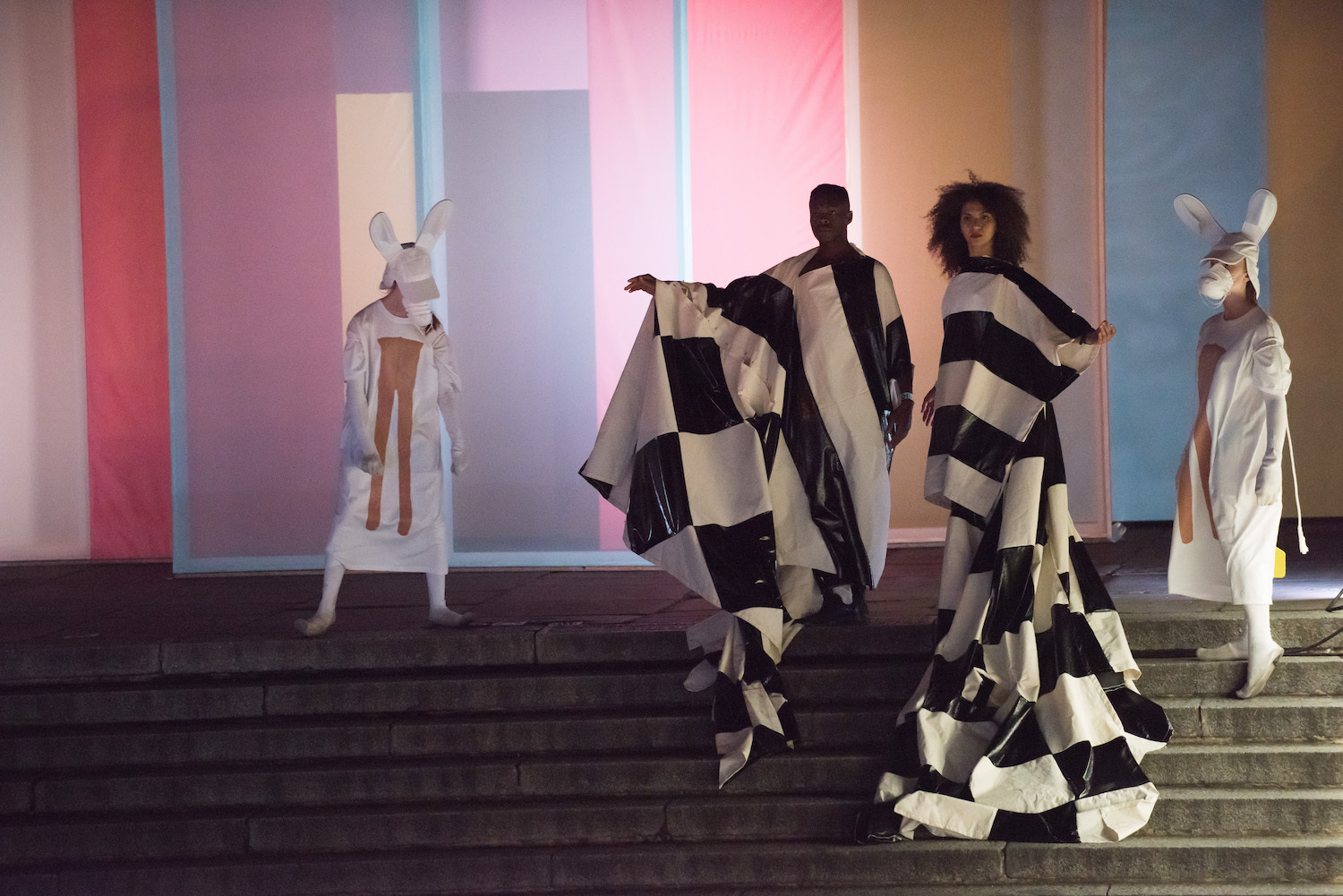Linder Sterling is an amorphous artist whose work and career has taken her pretty much everywhere, and seen her collaborate and work with pretty much everyone. Although Liverpool born, she came to prominence as a vital part of the Manchester post-punk underground in the mid-70s, one of the lucky few who witnessed The Sex Pistols’s now-legendary Free Trade Hall gig in the city in 1976 and witnessed the creative explosion that followed.
Bored of painting and drawing, she began to experiment in collage as an art form to mirror the newfound destructive-rebirth that punk symbolised, tearing things to pieces, building something beautiful out of the wreckage. Her collages spliced together fashion, domestic and pornographic images, remade them as a feminist statement. They ended up, famously, on the cover of the Buzzcocks’ single Orgasm Addict, an image that featured a naked woman with teeth for nipples and an iron for a head.
She went on to collaborate with pretty much everyone else in the Manchester scene, from punk theorist Jon Savage, to her one-time partner Howard Devoto’s band Magazine. She made friends with Morrissey and worked with Tony Wilson’s Factory Records, and fronted her own radical and uncompromising punk project Ludus, which saw her take to the stage in a meat dress at the Hacienda, decades before Lady Gaga.
In recent years she’s began experimenting with performance as a kind of collage in itself, her latest iteration debuted at the Duke Of York Steps, next to the ICA, at the weekend, as part of Art Night. The result of an almost year long collaboration between herself, Kathy Noble, Art Night’s curator, and her son, the composer Maxwell Sterling. A collage in nature too, a kind of contemporary fairy tale, based in part on Charles Perrault’s Donkey Skin fairy tale, about a princess who escapes from her father, and Oscar Wilde’s Salomé, as well the houses the architects of the 50s imagined we’d be living in in the 80s.
Following its performance we caught up with Linder to talk over the evening.

What was your original inspiration for this piece? Was it something you’d be planning or thinking about for a while?
The performance, Destination Moon. You must not look at her! is a collage of all of my favourite things and each element of the collage reveals a different strand of ongoing research into subjects as various as Oscar Wilde’s creation of the Dance of the Seven Veils in Salomé, to Jacques Demy’s pop rendition of the Donkey Skin fairy tale, to the architects Alison and Peter Smithson’s House of the Future in 1956.
Each element has been loitering in my psyche for quite some time and the new performance offered the perfect opportunity to weave together all of the above and more into one five hour extravaganza on the Duke of York steps in London. Even the title itself is a collage of a film that Alison and Peter Smithson wanted to show in their House of the Future plus a line from Wilde’s Salomé – “You must not look at her, something terrible will happen” The choir repeated the latter over and over again during their recital.
What do you think revisiting the 50s vision of the ideal home of the 80s reveal to us?
The architects Alison and Peter Smithson created their House of the Future for the Daily Express Ideal Homes exhibition in 1956. Very wisely they decided that you can never predict more than 25 years into the future so their house and its inhabitants existed in an imagined 1981. Having seen 1981 come and go, I became more and more fascinated by the accuracy of the Smithson’s predictions and where their blindspots where. They chose to work with the sportswear designer Teddy Tinling on the designs for the clothes of the inhabitants of the house of 1981, I’ve mirrored their decision by inviting Christopher Shannon – who knows a thing or two about sportswear – to create and curate the costumes for Destination Moon. You must not look at her! It turns out that Teddy was a spy, time will tell if Christopher is too.

This is the second time you’ve worked with Christopher Shannon. What’s drawn you back to him? What do you like about his work?
Christopher and I were both born in Liverpool, although decades apart. The city of Liverpool is a port and by its nature it’s a site of exchange, both of material goods and of ideas. Growing up there in the 60s, or in Christopher’s case in the 90s, leaves an indelible imprint of survival based upon wit and sheer determination. Christopher’s work takes the everyday, as in the cut of a denim jacket for example, and he plays with that found object in much the same way that I play with images that I find in magazines. We both make things right by making things wrong. We’re both curious about a certain display of sexuality, especially that of the male body. I think that we’ve all seen enough images of the sexualised female to last us a lifetime, let’s now see if someone with Y chromosomes wearing a backless denim jacket can turn heads for the right sort of reasons.
And what was it like working with your son on your soundtrack?
I’ve worked with my son Maxwell many times. He grew up listening to my record collection and I in turn listened to his, so we have shared reference points and an immediate shorthand when trying to explain ideas to each other. I like the idea of keeping everything in the family, even if that family is predominantly an adopted one of those that have crossed my path and left an indelible imprint in some way. Max’s five hour score for Destination Moon. You must not look at her! will only be partially heard by the audience, there are parallel soundtracks heard by the dancers in ear phones, this means that the dancers will sometimes appear deliberately out of step as they dance. The score is equal parts dissonance and consonance, rhythmic and rubato, played out by choirs, violins, cellos, two drummers, two pianos, a percussionist and musicians from the Raj Academy. It’s an imagined soundtrack from 1956 to 2026.

Do you see there as being a relationship between your collage work and your performances?
Yes, definitely, each is an extension of the other. A paper cut-out of a Morphy Richards iron glued to a page of a fashion magazine works in much the same way as a tap dancer dancing on the Duke of York steps does, i.e. it’s all about displacement, taking elements from their natural habitats and relocating them somewhere where they shouldn’t be. James Buck and Luke Brooks designed the costumes for the Donkey Skin characters and they are perfect examples of the art of creative displacement. If you deconstruct James and Luke’s costumes, you’ll see that they’re comprised of everyday objects – a fly swat, a pair of tights and a dust mask. When these incongruous elements are reconfigured upon the female body a state of enchantment begins to happen, we’re immediately back in the land of the fairy tales.
What do you find interesting about performance as a medium to work in?
It’s an incredibly liberating sphere. The perfect antidote to the hours that I spend in solitary confinement cutting up magazines and glueing them back together again. Performance means that I can create a temporary democracy by inviting performers and designers that I admire and letting them do whatever it is that they do so well with as little interference as possible. During Art Night all ten artists created works that were experienced beyond the confines of a gallery, it’s a chance for us all to interact with audiences that normally wouldn’t be seen dead inside a white cube. I like the possible volatility of that, it’s not quite the Electric Circus in north Manchester in 1977 but it occasionally gets close.

How do you think the audience reacted to it?
The audience and the weather were the two elements that remained unpredictable. Both could possibly have created havoc within the performance and in the end Mother Nature was the villain and we had to endure an hour of her downpour. The diehards in the audience weren’t remotely thrown though; they were there from start to finish.
Were there they any surprises?
Yes, lots! The main one being that we pulled it off, no one fell down the Duke of York steps, no one got electrocuted after the storm and everyone remembered when to enter stage left and to exit stage right. We may even do it all over again in Tokyo one day.
Credits
Text Felix Petty
Images courtesy of The ICA and Art Night
